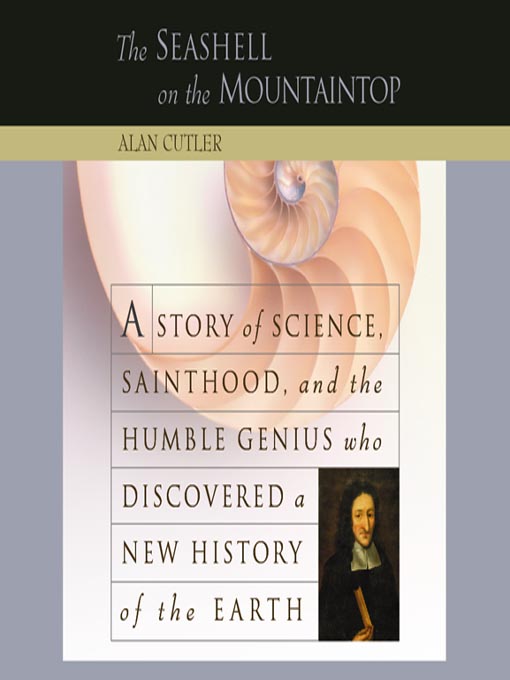
The Seashell on the Mountaintop
A Story of Science, Sainthood, and the Humble Genius who Discovered a New History of the Earth
کتاب های مرتبط
- اطلاعات
- نقد و بررسی
- دیدگاه کاربران
نقد و بررسی

Seventeenth-century Danish anatomist Nicholai Steno spent much of his scientific life working for the Medicis in Florence, where he was renowned for his skill in dissection. When he turned his attention to fossils, he invented the basic principles of studying the Earth's strata, demonstated that our planet was much older than was then believed, and showed that fossils are the remains of animal life, rather than animal-like fossils. He is today recognized as the "founder of the science of geology." Grover Gardner gives a straightforward rendition. His performance is all that one would expect from an AUDIOFILE Golden Voice--no histrionics; no unnecessary embellishments; just a clear, enjoyable listen. R.E.K. (c) AudioFile 2003, Portland, Maine

April 7, 2003
Science writer Cutler (a contributing editor to The Forces of Change: A New View of Nature) re-creates a fascinating 17th-century world of political and religious upheaval and the progress achieved by curious scientists like the Danish anatomist and (according to Cutler) founder of geology, Nicolaus Steno (1638–1686). A one-time medical student renowned for "his preternatural skill with a scalpel," Steno discovered the parotid gland, which produces saliva, and tear glands. Steno's genius for anatomy provided him the tools to work on the mystery of fossils and the question of how seashells could be found in the rocks of mountains far from the sea. He hypothesized that layers upon layers of earth formed sediments in a sequence, recording a series of events and telling a story about the age of the earth. According to Steno, the stratum at the bottom is the oldest and that at the top is the youngest. Seashells, he said, found their way to mountaintops not by the great biblical flood, as many of his contemporaries believed, but by constant erosion and the sedimentation of soil. Steno published his discoveries in De Solido,
after which he abandoned science, converted to Catholicism and spent the last 20 years of his life as an ascetic priest and eventually a bishop. In 1988, he was beatified. Cutler's animated and energetic prose provides a page-turning thriller of scientific discovery, and this splendid biography captures in intimate detail not only its subject but also the tenor of Steno's times.

The subtitle of this fascinating geological history says it all. In the seventeenth century, priest and scientist Nicholas Steno traveled to Tuscany, where theologians and philosophers had been troubled by the presence of shell fossils on top of hills and mountains throughout the region, far from the sea. Some ideas that predated Steno were that these were rocks that formed like shells and that the great flood of Noah had swept them into place. With early insight into the stratification of the earth's surface, Steno recognized that fossils were at one time living organisms. Paul Hecht gives a smooth, professional narration with a perfect delivery of most of the European languages, as well as the Latin and scientific terms. THIS is the book to listen to when traveling to Italy. B.H.B. (c) AudioFile 2004, Portland, Maine

























دیدگاه کاربران